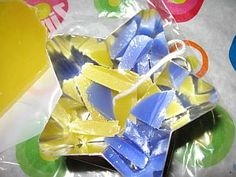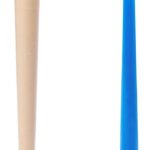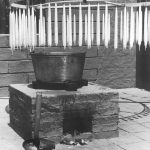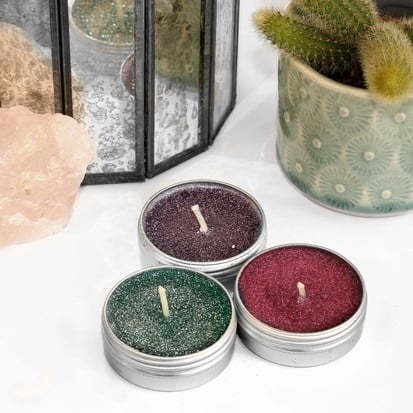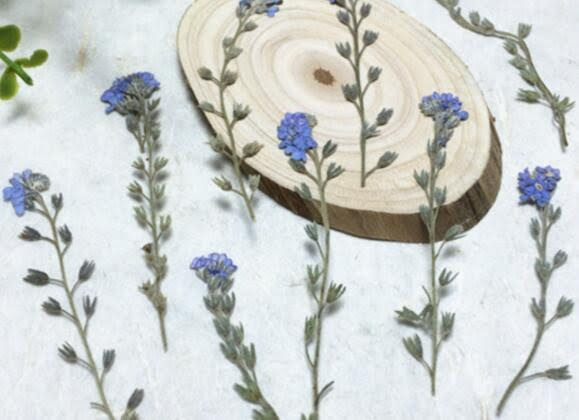Candle making in colonial times was a crucial household skill that provided light and warmth in the absence of electricity. This traditional craft has evolved over time but continues to hold a place of importance in today’s society. In this article, we will delve into the history, materials, techniques, and significance of candle making during colonial America.
During colonial times, candles were not just a source of light; they played a vital role in daily life. From illuminating homes to providing light for work and social gatherings, candles were indispensable. The process of creating these essential items was a labor-intensive task that required special skills and knowledge of the materials used. Understanding how candles were made in colonial times gives us insight into the challenges and ingenuity of early settlers.
In this comprehensive guide, we will explore the evolution of candle making techniques from colonial times to present day, examining how innovations have transformed this ancient craft. Additionally, we will discuss how the methods and practices of colonial candle making continue to influence modern candle making processes. Stay tuned for a video demonstration showcasing the traditional art of candle making in colonial America.
History of Candle Making in Colonial America
Candle making in colonial America played a vital role in everyday life, providing both light and heat during the long winter months. The early settlers, lacking access to electricity, relied heavily on candles for illumination after sunset.
The history of candle making in colonial America dates back to the 17th century when European settlers brought their candle making techniques to the New World. Colonists quickly adapted these methods to suit their needs and resources, leading to the development of unique candle making practices.
Materials used in colonial candle making were primarily sourced from nature and included tallow, beeswax, and bayberry wax. Tallow candles were the most common due to their affordability and availability, as they could be made from animal fats such as beef or mutton. Beeswax candles, while more expensive, provided a cleaner burn and pleasant aroma.
Bayberry wax was less common but prized for its sweet scent and clean-burning properties. Additionally, wicks were typically made from cotton or hemp fibers twisted together.
The tools used in colonial candle making were simple yet essential for producing quality candles. A large cauldron or pot was used to melt the wax over an open fire or stove. Molds made of metal, ceramic, or wood were shaped into various sizes and designs depending on the desired outcome.
A wick holder kept the wick centered within the mold while the wax cooled and hardened. Colonial candle makers had to carefully monitor temperature and pouring techniques to ensure that each candle turned out well-formed and functional for household use.
Materials and Tools Used in Colonial Candle Making
Candle making in colonial times was a vital skill that required specific materials and tools to produce high-quality candles. Colonists relied on candles not only for illumination but also for heating, cooking, and as a form of currency in trade. Understanding the materials and tools used in colonial candle making offers insights into the resourcefulness and ingenuity of early American settlers.
Materials Used in Colonial Candle Making:
– Beeswax: Beeswax was one of the most prized materials for candle making due to its clean-burning properties and pleasant aroma.
– Tallow: Tallow, rendered animal fat, was another commonly used material for candles, especially among poorer colonists who could not afford beeswax.
– Wicks: Wicks were typically made from cotton or linen fibers twisted together to create a sturdy structure that could withstand being burned.
– Dye: Natural dyes derived from plants and minerals were used to color candles, adding an aesthetic element to their functionality.
Tools Used in Colonial Candle Making:
1. Double Boiler: A double boiler was used to heat the wax or tallow gently without direct contact with the flame to prevent scorching.
2. Mold: Molds made of tin or pewter were used to shape the melted wax or tallow into cylindrical or tapered candles.
3. Wick Holder: A wick holder, often made of wood or metal, was used to keep the wick centered within the mold while the wax cooled and solidified.
Colonial candle makers demonstrated remarkable craftsmanship and resourcefulness by utilizing these simple yet effective materials and tools to create essential items for everyday life. The process of colonial candle making may seem rudimentary compared to modern techniques; however, it exemplifies the resilience and creativity of early American settlers striving to meet their basic needs with limited resources.
Experience firsthand how colonial candle making was done by watching a captivating video demonstration that showcases this historical craft’s significance in shaping colonial society.
Step-by-Step Process of Making Candles in Colonial Times
During Colonial times, making candles was an essential skill that every household needed to know. The process of making candles in Colonial America was not only a practical necessity for providing light but also a social and cultural activity. The art of candle making required attention to detail and patience, as the materials and tools available were limited compared to modern times.
The primary material used in Colonial candle making was tallow, which is animal fat rendered into a solid form. Tallow candles were the most common type found in Colonial households due to the abundance of fats from animals like cows and sheep. Beeswax candles were also used but were more expensive and typically reserved for special occasions or wealthier families.
To begin the candle-making process, the tallow or beeswax would be melted down in a large pot over a fire. Wicks made of cotton or flax would be dipped repeatedly into the molten wax until they reached the desired thickness.
This dipping process had to be done carefully to ensure a smooth and even coating on the wick. Once the candles had been built up to the desired size, they would be left to cool and harden before trimming any excess wax from the ends.
| Colonial Candle Making Materials | Colonial Candle Making Tools |
|---|---|
| Tallow (animal fat) | Metal Pot |
| Beeswax (for special occasions) | Dipping Rack |
| Cotton or Flax Wicks | Scissors for Trimming |
The step-by-step process of making candles in Colonial times required precision and knowledge of how different factors could affect the outcome of the final product. While modern candle making has evolved with technological advancements, understanding the traditional methods can provide insight into the historical significance of this craft and how it continues to influence candle making today. For those interested in experiencing Colonial candle making firsthand, there are resources available online, including videos demonstrating this timeless skill.
Importance of Candles in Colonial Society
Candles held significant importance in colonial society, serving as a crucial source of light in homes, churches, and public spaces before the advent of electricity. In colonial times, candles were not only practical but also symbolic of social status and religious rituals. Wealthier families could afford finer quality candles made from beeswax, while those of lesser means typically used tallow candles made from animal fat.
The availability and quality of candles played a role in shaping daily life in colonial America. Candle-making was a labor-intensive process that required meticulous attention to detail and skill. Colonial women were often responsible for producing candles for their households, dedicating hours to rendering animal fat or boiling beeswax to create the necessary material for candle-making.
Candlelight also had cultural significance in colonial society beyond its practical uses. Candles were essential during religious ceremonies, illuminating churches during worship services or solemn events like weddings and funerals. The flickering glow of candles added warmth to social gatherings and served as a symbol of hope during challenging times. Overall, the role of candles in colonial society went beyond mere illumination, influencing social dynamics and fostering a sense of community among colonists.
| Aspect | Detail |
|---|---|
| Significance | Candles served as important sources of light in colonial America. |
| Social Status | The type and quality of candles used could indicate one’s socio-economic status. |
| Cultural Symbolism | Candles played roles in religious ceremonies and social gatherings beyond illumination. |
Evolution of Candle Making Techniques From Colonial Times to Present Day
Candle making techniques have evolved significantly from the colonial times to the present day, showcasing innovation and adaptation to modern technology. In colonial America, candles were primarily made using tallow or beeswax, a labor-intensive process that required patience and precision. However, as time progressed, new materials and methods were introduced that revolutionized the candle making industry.
Modern candle making now includes a wide range of options such as soy wax, paraffin wax, and even gel wax, providing a diverse selection for consumers looking for specific qualities in their candles. Additionally, advancements in technology have streamlined the production process, allowing for faster and more efficient creation of candles on a larger scale.
Whether it’s traditional hand-dipped candles or mass-produced scented candles, the evolution of techniques has enabled the industry to cater to a variety of tastes and preferences.
To better understand the transition from colonial candle making to modern practices, it is important to recognize how historical methods laid the foundation for current manufacturing processes. The skill and craftsmanship developed during colonial times have been passed down through generations, influencing contemporary artisans in their approach to candle making. By learning about the origins of this craft, we can appreciate the artistry and dedication that goes into creating each unique candle today.
How Colonial Candle Making Influences Modern Candle Making
Colonial candle making techniques have had a lasting impact on the modern candle making industry. The artisanal approach, reliance on natural materials, and attention to detail used in Colonial Times are still evident in today’s candle making process. Many candle makers today draw inspiration from the traditional methods and materials used by colonists, incorporating them into their own craft to create unique and high-quality candles.
One of the most significant influences of colonial candle making on modern practices is the emphasis on using natural ingredients. In Colonial Times, candles were typically made from tallow or beeswax, both of which are still popular choices among modern candle makers.
These natural materials not only burn cleaner than synthetic alternatives but also offer a more authentic and traditional aesthetic to the finished product. Additionally, many contemporary candle makers have adopted the use of molds and techniques similar to those used by their colonial predecessors, further connecting the past with the present.
Furthermore, the step-by-step process of making candles in colonial times has paved the way for modern advancements in candle making technology and technique. While some aspects of colonial candle making remain true today, such as melting wax and pouring it into molds, innovations like automated pouring machines and specialized waxes have streamlined and improved the production process.
However, despite these advancements, many modern candle makers still value the craftsmanship and attention to detail that defined colonial candle making practices. Ultimately, the influence of colonial candle making can be seen not only in the physical characteristics of modern candles but also in the dedication to preserving a time-honored tradition.
Colonial Candle Making Video Demonstration
In this section, we will delve into the fascinating world of colonial candle making through a video demonstration. By watching a step-by-step guide on how candles were made during colonial times, we can gain a deeper appreciation for the craftsmanship and labor that went into creating this essential household item.
Exploring the Colonial Candle Making Process
The video starts by showcasing the materials and tools used in colonial candle making, such as tallow or beeswax, wicking, molds, and a heat source. Viewers are transported back in time as they witness each step of the process, from melting down the wax to pouring it into molds and setting the wicks. The painstaking attention to detail and skill required to produce candles highlights the importance of this craft in early American society.
Understanding the Significance of Candles in Colonial America
As we watch the colonial candle making video demonstration, we come to understand why candles played such a vital role in everyday life during that period. Candles provided light after sunset, allowing people to work or study late into the night. They also served as a source of warmth and comfort, particularly during long winter evenings. By experiencing firsthand how candles were made in colonial times, we can better appreciate their value and impact on society.
Applying Colonial Candle Making Techniques Today
By observing the techniques used in colonial candle making through this video demonstration, viewers can gain inspiration for incorporating traditional methods into modern candle making practices. Whether it’s using natural materials like beeswax or experimenting with different mold shapes, there is much to be learned from our ancestors’ approach to candle making. This video serves as a bridge between past and present, showcasing how timeless techniques can continue to influence contemporary craftmanship.
Tips and Tricks for Trying Colonial Candle Making at Home
When trying your hand at colonial candle making at home, there are a few tips and tricks that can help you achieve the authentic look and feel of candles made during colonial times. These tips will not only enhance your experience but also allow you to create candles that resemble those crafted by our ancestors.
Tip 1: Use Beeswax or Tallow
In colonial America, candles were typically made using beeswax or tallow. Beeswax candles were considered a luxury item, while tallow candles were more commonly used by the general population. To recreate this historical accuracy, consider using beeswax or tallow as the base for your candles. Beeswax can be sourced from local beekeepers, while tallow can be rendered from animal fat.
Tip 2: Incorporate Natural Dyes
To add color to your colonial-style candles, opt for natural dyes such as berries, roots, or spices. In colonial times, these materials were used to create vibrant hues without the use of synthetic chemicals. Experiment with different ingredients to achieve colors that align with traditional candle making practices.
Tip 3: Hand-Dipping Technique
One of the hallmark techniques of colonial candle making is hand-dipping. Instead of using molds, colonial artisans would repeatedly dip wicks into melted wax or tallow to build up layers and create cylindrical candles.
Embrace this method at home by setting up a dipping station and slowly building up layers of wax or tallow around your wick. This hands-on approach will not only yield authentic-looking candles but also provide insight into the labor-intensive process of colonial candle making.
By incorporating these tips and tricks into your candle making process, you can transport yourself back in time to colonial America and experience the artistry and craftsmanship of traditional candle making firsthand. From sourcing authentic materials to utilizing historical techniques, each step you take in creating colonial-style candles at home brings you closer to understanding and appreciating this timeless craft.
Conclusion
Candle making in Colonial Times was not just a practical necessity, but also a craft that reflected the ingenuity and resourcefulness of early American settlers. The process of making candles from tallow or beeswax required patience, skill, and attention to detail. These candles served as the primary source of light for colonial households, illuminating long winter nights and providing warmth in dimly lit rooms.
The art of candle making in Colonial America has left a lasting legacy that still influences modern candle making techniques today. While modern candle making has evolved with new ingredients and tools, the basic principles and processes remain deeply rooted in the methods developed centuries ago. The dedication to craftsmanship and attention to detail that characterized colonial candle making continue to inspire artisans and hobbyists alike.
For those interested in experiencing the traditional craft of colonial candle making first-hand, there are resources available online, including videos demonstrating the step-by-step process. By trying out this historical technique at home, individuals can gain a deeper appreciation for the artistry and significance of candle making in Colonial Times. Whether as a practical skill or as a creative outlet, the enduring legacy of candle making serves as a reminder of our shared history and cultural heritage.
Frequently Asked Questions
How Did They Make Candles in Colonial Times?
Candles in colonial times were typically made using a process called tallow dipping. Tallow, which is animal fat, was boiled down and then repeatedly dipped into the fat to create layers on a wick. This method produced relatively simple and inexpensive candles.
How Did They Make Candles in the 1800?
In the 1800s, new methods of candle making emerged, such as using spermaceti wax from sperm whales. This type of wax burned cleaner and brighter than tallow candles. Additionally, the introduction of stearin from palm oil helped improve the quality of candles during this time period.
What Tools Did Colonial Candle Makers Use?
Colonial candle makers used basic tools like molds made from metal or wood to shape their candles. Wicking needles were essential for threading the wicks through molds before pouring in the melted tallow or wax.
Stirring rods were also used to mix various additives into the materials for scented or colored candles. Additionally, trimming shears were employed to cut excess wick after a candle had cooled and hardened.

Welcome to my candle making blog! In this blog, I will be sharing my tips and tricks for making candles. I will also be sharing some of my favorite recipes.

